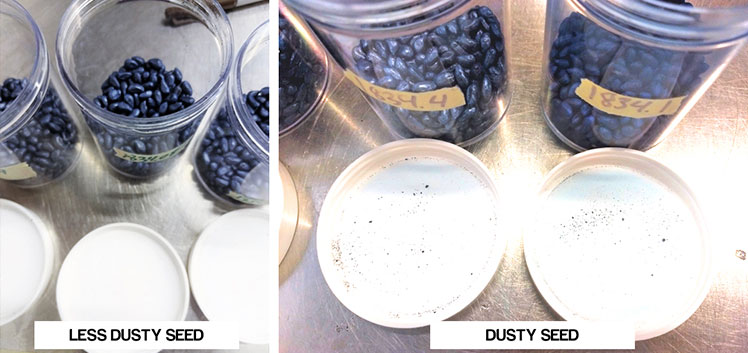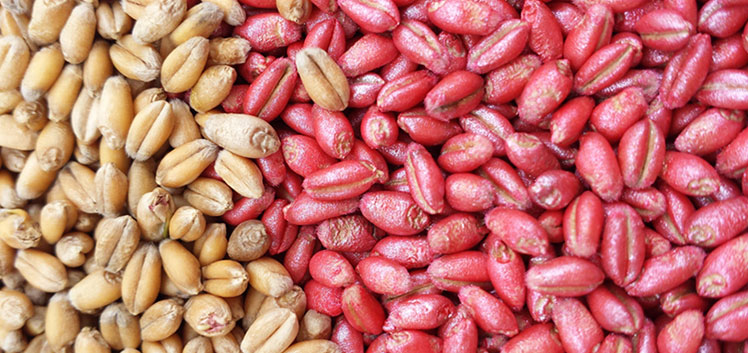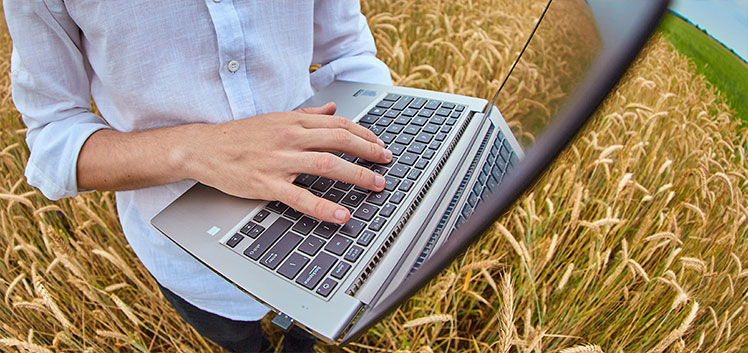It goes without saying that when we treat seed, we want the treatment to stay on the seed until it’s safe and sound in the ground. Sometimes treatments do try to escape off the seed, which can cause many a headache – but why is this happening? Let’s explore the differences between dust and abrasion, why they occur, and some easy ways to determine if your seed is prone to these issues.
Dust .vs Abrasion
Dust results when the seed applied technologies (aka seed treatment) is coming off and abrasion is when the treatment is being pushed off edges and the seed is no longer uniformly coated. Due to these issues, polymers are not only demanded to minimize dust but also minimize abrasion. Most of us are familiar with dust. We use polymers or glue systems to minimize “dust off” of the treated seeds, which is to say reducing how chemicals or other seed-applied technologies come off the seed. European standards limit dust off to 0.75 grams for every 100,000 kernels of seed.

Dust Confusion
But dust, while very visible, sometimes can be misunderstood and confused with abrasion. Dust or seeds that demonstrate a high degree of dust are visible by way of plumes or clouds of dust emitting out of seed processing equipment, especially when a seed treatment slurry is already dry on the seed. However, you can have dusty seed even without the application of chemicals. We all know wheat seed is especially dusty and in seed processing facilities, the machinery and/or grain elevators employ various equipment to capture, collect, and properly dispose of this natural dust. Corn can also be dusty and we know of the proverbial “bee’s wings” in corn seed processing plants.
Treatment Dust
Filter after filter collects this inherent dust and that’s before the seed is even treated. Now we apply a treatment slurry, for example, wheat seed with a heavy dose of imidacloprid as an insecticide with various fungicides. We might also apply micronutrients such as zinc if not also a biological to help with yield and management of abiotic stress. Yet if there’s a lack of comparable chemistries between the seed treatment components, it could result in significant amounts of dust. If the seed treatment includes say a red colorant, then plumes of red dust may escape from a piece of seed transfer equipment.
Environmental and Financial Impact
Simply put – dust causes problems. It poses an environmental health and safety risk as a hazard for both workers and the environment. It also is a financial risk for the grower who needs the seed treatment technologies to have absolute placement in the ground around the seed and not scattered through the air or captured in seed planters.
Click here for our complimentary Seed Treatment Checklist.
Process and Transportation Challenges
Let’s compare seed that naturally absorbs moisture with dent or field corn. Field corn has a hard, waxy surface and the slurry applied to corn seed is not absorbed in the same manner as sorghum or wheat. Once corn seed is treated the slurry needs to be cured quickly despite cold temperatures where treatment often occurs. The seed then moves through various processing equipment, goes into a hopper, elevates to another hopper where it may go into a bulk bag, and then into smaller bags. From there it is transported through the distribution channels: from warehouse to warehouse to distribution centers and to growers’ fields; and possibly back for the same thing to happen the following year. Throughout this process dust certainly may result and often does, but the bigger challenge may be abrasion. This is where the seed scuffs against each other throughout handling and transportation, and throughout various equipment – the applied technologies may rub off. This results in seed that is no longer uniformly coated. It’s almost like a partially scratched off lottery ticket and similar to the residue that you “scratch off” the ticket, the same principle can be seen especially on corn seed.

Abrasion Issues
Abrasion causes its own problems – the lack of uniformity can affect plantability and can also affect the degree to which pesticides protect the seed. The flowability of the seed can be affected when areas of the seed build up a higher degree of sticky treatment slurry. This makes it more difficult for the seed to behave optimally from a mechanical point; growers may experience skips and doubles during planting and slower movement through funnels and conveyors.
Drop Test
So next time you look at your seed, here are a few things to check for. First, ensure the seed has a uniform coating. This is the simplest way to check for abrasion and low dusting. Secondly, for a more advanced yet simple abrasion vulnerability test, place a known amount of seed in a resealable plastic bag. We suggest you put this into another bag as well in case one of the bags pop open. Then simply drop that bag of seed from a height of about five feet onto a hard surface. Do that 50 to 100 times (told you it was more advanced) and when you observe the seed you’ll quickly notice to what degree any abrasion occurred. This test is especially helpful when comparing one set of seed against another whether it be different varieties or treatment recipes.




